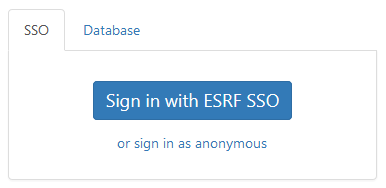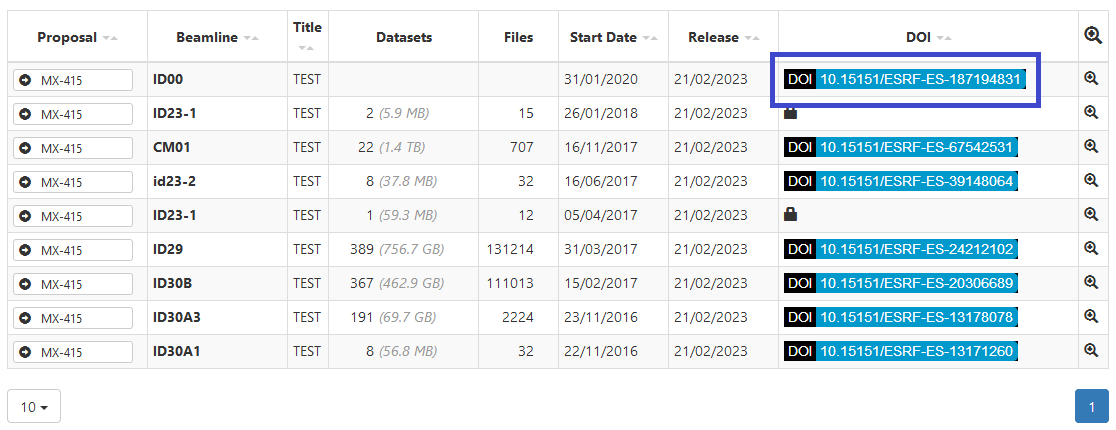- Home
- Users & Science
- Support and Infrastructure
- Software
- ICAT @ ESRF
ICAT @ ESRF

ICAT is an open source metadata management system designed for large facilities and provided by PaNdata (consortium of all photon and neutron sources in Europe, dedicated to sharing good practices of data management). It enables the collection, storage and searching of the generic metadata of experiments along with the corresponding raw data, therefore enabling their reuse at a later stage.
It also serves the purpose of tracking all samples sent on-site for experiments to be performed at the ESRF. Before sending a parcel of samples or ancillary equipment to the ESRF, users must declare those elements in the shipment corresponding to their experiment session in ICAT, ask for safety authorisation, and print the label created by ICAT to affix to the parcel to be sent.
Access to the metadata and raw data - the ESRF Data Policy
Only the proposers and experiment team can access these data during an embargo period of three years after the experiment, after which time the data will be automatically made public for other users to see and use. This applies to non-proprietary research experiments only - see the ESRF Data Policy for more details and exceptions.
Automatically collected metadata for the ESRF experiments can be accessed here with your User Portal login.
DOI for my experiment
A DOI is automatically generated for each experiment session and should be mentioned in any publications that use data from that session.
Status of ICAT implementation on the ESRF beamlines
The implementation of metadata storage and data archiving on all beamlines is a big project - follow the progress and see the latest status of its implementation on the beamlines here.
More information on the ICAT project can be found here and technical documentation here.

Log-in to https://data.esrf.fr with your User Portal (SMIS) credentials to access your proposal data. If you log-in as anonymous you will only have access to opened data (opened after the three-year embargo period or manually released by a user).
Look for the dataset you are interested in either by using the search tool or by using the proposal number and/or beamline number. Click on “Download” to retrieve the data in a zip file.
Access to the data by a scientist who is not user of the experiment session
Note that a scientist cannot access the data of a past experiment if he/she was not originally registered as a participant on the A form of this experiment. Should this be the case, the user would then need to request for the main proposer of the proposal to grant him/her access to the data. This video will guide him/her through the steps of the process.
According to the ESRF Data Policy and ESRF Publication Guidelines, every time you publish your research analysis issued from raw data measured at ESRF, you must mention the ESRF instrument on which the data were measured and include the data DOI in your manuscript in order for other scientists to reuse your data once it becomes openly accessible.
The DOI for a session can be found both in ICAT and in the User Portal
- In ICAT
Under the My Data tab, you can view all the experiment sessions you have been involved in.
Use the search box to find a specific session keyword or sort your sessions by proposal, instrument or date,
Once you have found the session you are looking for, you will see the DOI link for that session in the right column of the table. Click on this link to go directly to the DOI landing page.

- In the User Portal
Under the tab "Proposals/Experiments":
Select "A Form": a table with the list of your session(s) is proposed.
Click on the DOI icon ("Further Actions" column on the right of the table) to get the DOI number corresponding to the selected session: this will also lead you to the DOI page with all the information on the session.
For many publications, the data referred to in the publication are a subset of one or more experiment sessions, or include data from more than one session. For this reason, researchers may prefer to manually create a DOI for a specific collection of datasets within one or more experiment sessions.
The Main Proposer, co-proposers and all additional collaborators now have the option to manually mint DOIs for a selected collection of datasets directly from the ICAT interface. They must first ensure that they are included in the data portal session (this can be done manually by the Main Proposer) and can then proceed by ticking the box associated with each desired dataset within the sessions that appear in the My Data tab :

As soon as a dataset is selected by ticking the box, a My selection tab appears in the top black menu and all datasets ticked are added automatically to this selection.
In the My selection tab, all selected datasets can be seen, and clicking on Mint a DOI will create a DOI specifically associated to these datasets. The Main Proposer will then be asked to fill in the new DOI landing page information (Title, Abstract, Author names).




